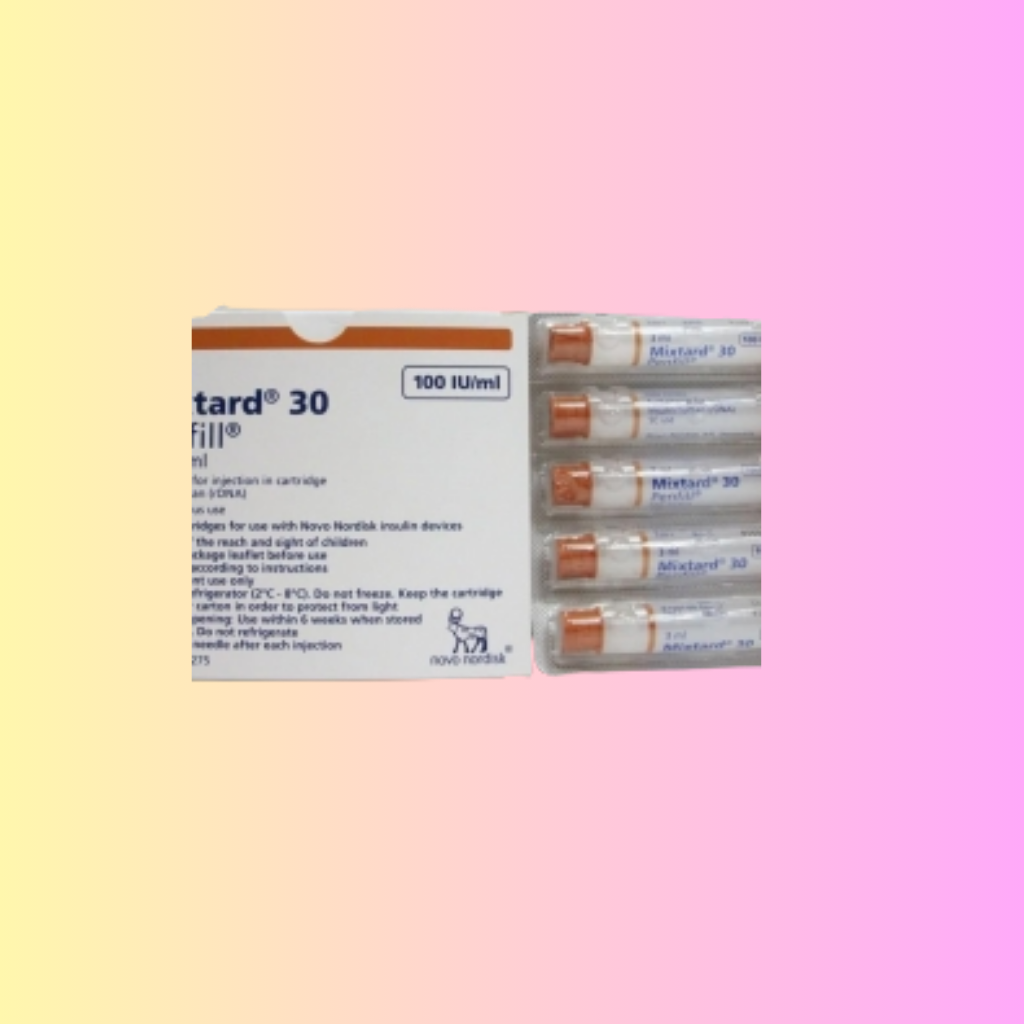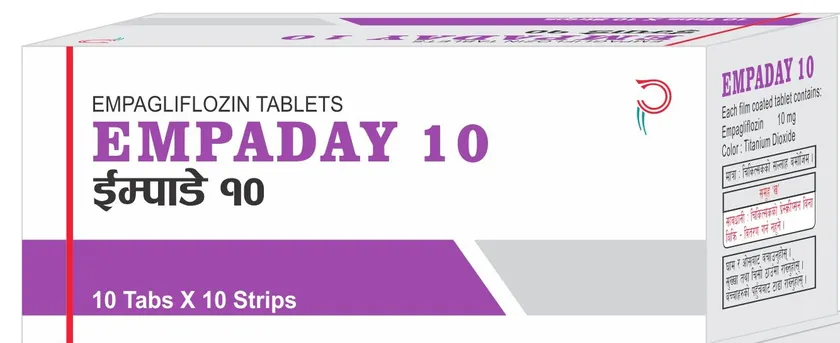MIXTARD-30HM PENFIL (100IU/ML)
MIXTARD-30HM PENFIL (100IU/ML) is a biphasic human insulin (30% short-acting, 70% intermediate-acting). It comes in a Penfill cartridge for use with an insulin pen and is used for Type 1 and Type 2 diabetes to control blood sugar both after meals and for longer periods. It’s injected subcutaneously 30 minutes before a meal and must be gently mixed before use. Hypoglycemia (low blood sugar) is the most common side effect.
₨617.00
Ask about productDescription
MIXTARD-30HM PENFIL (100IU/ML) is a biphasic human insulin formulation in a convenient Penfill cartridge (designed for an insulin pen device). The “HM” stands for “Human Monocomponent,” indicating a highly purified human insulin.
It’s a pre-mixed combination containing:
- 30% Soluble Human Insulin: This is a short-acting insulin. It starts working relatively quickly (within 30 minutes) to manage blood sugar spikes after meals.
- 70% Isophane Human Insulin (NPH): This is an intermediate-acting insulin. It has a slower onset and a longer duration of action, providing sustained blood sugar control between meals and overnight.
The “100IU/ML” indicates its concentration: 100 International Units of insulin per milliliter of suspension.
What it’s used for:
- Type 1 and Type 2 Diabetes Mellitus: Mixtard 30 HM Penfill is used to manage blood sugar levels in both adults and children with Type 1 and Type 2 diabetes. It’s chosen when a patient needs both immediate post-meal glucose control and a background (basal) insulin effect with fewer injections than separate rapid and intermediate insulins.
How it works:
- The soluble insulin component acts first to lower blood sugar quickly after injection (when given before a meal).
- The NPH insulin component provides a more gradual and prolonged effect, helping to keep blood sugar stable for several hours. This combination helps to provide more comprehensive blood sugar control.
Administration:
- Penfill Cartridge: These cartridges are designed to be used with specific reusable insulin pen devices (e.g., Novo Nordisk pens like NovoPen).
- Subcutaneous Injection: It is injected under the skin (subcutaneously) into areas such as the abdomen, thigh, upper arm, or buttocks.
- Timing: It is typically injected 30 minutes before a meal (often breakfast and/or dinner, as directed by your doctor). It’s crucial to eat a meal or snack containing carbohydrates within 30 minutes after the injection.
- Mixing Before Use: As it’s a suspension, the Penfill cartridge must be gently rolled and inverted several times (e.g., 10 times) before each injection to ensure the insulin components are evenly mixed and the liquid appears uniformly cloudy or milky. Do not shake vigorously.
- Rotation of Injection Sites: Always rotate injection sites within the chosen area to prevent lipodystrophy (skin thickening or pitting) and ensure consistent absorption.
- Do NOT Share: Insulin pens are for single-patient use only. Never share pens, even if the needle is changed, due to the risk of infection.
- Do NOT Dilute or Mix: This formulation should not be diluted or mixed with other insulins. It is not for intravenous administration or for use in insulin pumps.
Important Considerations and Side Effects:
- Hypoglycemia (Low Blood Sugar): This is the most common and serious side effect. Symptoms include cold sweats, confusion, dizziness, shakiness, headache, and hunger. Patients must monitor blood sugar regularly and carry a source of fast-acting sugar (e.g., glucose tablets, fruit juice) to treat hypoglycemia immediately. The risk is higher if meals are delayed or missed after injection.
- Injection Site Reactions: Pain, redness, swelling, itching, or lumps at the injection site are common. Rotating sites helps minimize these.
- Weight Gain: A common side effect of insulin therapy.
- Allergic Reactions: Rare but potentially severe allergic reactions can occur.
- Alcohol Consumption: Alcohol can significantly affect blood sugar levels and should be consumed with caution or avoided as advised by your doctor.
- Storage: Unopened cartridges should be refrigerated (2°C-8°C). Once opened and in use, they can typically be stored at room temperature (check the specific product leaflet, usually below 30°C for up to 28 days). Do not freeze.
Always consult your doctor, pharmacist, or diabetes educator for personalized medical advice, proper training on injection technique, and comprehensive management of your diabetes. This information is for general knowledge and should not replace professional medical consultation.
Additional information
| form | INSULIN GLULISINE |
|---|








Reviews
There are no reviews yet.